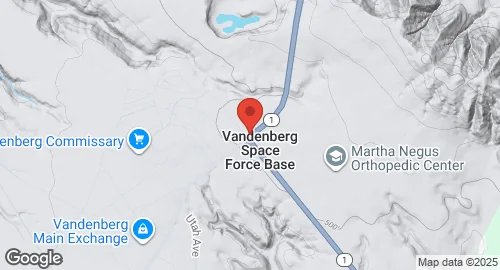Vandenberg Space Force Base
Summary
| Operating Country | 🇺🇸 United States |
| Location | 🇺🇸 United States |
| Status | ◉ Active |
| Usage | Dual |
| Year built | 1941 |
| Operating Organization | US Space Force |
| Units |
|
Description
Vandenberg Space Force Base, located in Santa Barbara County, California, is a United States Space Force installation established in 1941 as Camp Cooke. Initially an Army training ground during World War II and the Korean War, it was converted into a missile base in 1957, becoming Cooke Air Force Base, and was renamed Vandenberg Air Force Base in 1958. It transitioned to Vandenberg Space Force Base in 2021. The base serves as a space launch facility for the Western Range, conducting both military and civilian/commercial space launches, as well as missile testing. Its location allows for launches westward over the Pacific Ocean into polar orbits.
Historically, Vandenberg played a role in the development and testing of various ballistic missiles, including the PGM-17 Thor, SM-65 Atlas, HGM-25A Titan I, LGM-25C Titan II, LGM-30 Minuteman I, II, and III, and the LGM-118 Peacekeeper. It was also the launch site for Discoverer 1, the world's first polar orbit satellite, in 1959. The base was extensively modified for the Space Shuttle program at Space Launch Complex-6 (SLC-6), though shuttle operations were ultimately canceled after the Challenger disaster. SLC-6 was later reconfigured for Delta IV launches and is now leased by SpaceX for Falcon 9 and Falcon Heavy launches. Other launch vehicles, such as Atlas V and Minotaur, also operate from Vandenberg. The base also supports the Ground-based Midcourse Defense Interceptor program and has hosted landings for the Boeing X-37B uncrewed spacecraft.
Currently, the host unit is the Space Launch Delta 30 (SLD 30), which oversees the Western Range. The base includes operational groups for spacelift, missile test launch, aeronautical, and space surveillance missions, as well as mission support and medical services. Notable features include the Space and Missile Heritage Center, located at Space Launch Complex 10, which preserves the history of missile and spacelift activities. The base's rugged terrain provides significant coastal habitat, home to several threatened or endangered species.
